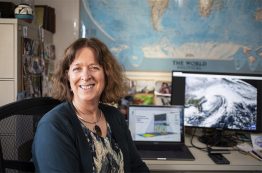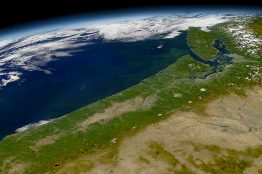The Pacific Northwest Seismic Network, based at the University of Washington, will host an online event on the 40th anniversary of the eruption of Mount St. Helens, featuring seismologists from the UW and other institutions who can explain the events before, during and after the historic blast. The virtual event will take place from 6:30 to 8 p.m., Monday, May 18, on the PNSN’s YouTube channel — exactly 40 years after the blast.
Read more at UW News »‘Age of A.I.’ documentary on YouTube features UW experts
Researchers at the University of Washington share their expertise on artificial intelligence and data science in “The Age of A.I.,” an online documentary produced and released this winter by YouTube. The series narrated by Robert Downey Jr. looks at how AI could affect everything from health care to the search for extraterrestrial life. The seventh episode, titled “Saving the World One Algorithm at a Time,” features the UW-based Pacific Northwest Seismic Network.
Read more at UW News »UW scientist to lead NASA field study of East Coast snowstorms
Snowstorms can wreak havoc across the United States, but especially on the East Coast. Snow is the least-understood form of precipitation, with major snowstorms among the most difficult weather events to forecast. Yet people rely on these forecasts to stay safe, plan travel routes and decide whether to close schools or businesses. To better understand large, disruptive snowstorms, a University of Washington atmospheric scientist will lead a NASA field campaign this winter to fly through major snowstorms along the East Coast.
Read more at UW News »Better wildfire and smoke predictions with new vegetation database
It’s hard to find a place in the U.S. that isn’t impacted by wildfires and smoke. Dry landscapes, warmer temperatures and more development near forested areas all contribute to massive wildfires across North America each year. Smoke and haze from these fires can travel hundreds of miles from their source, affecting the health and wellbeing of communities across the U.S. Given these impacts, scientists rely on models that try to predict the severity of wildfires and smoke.
Read more at UW News »World Tsunami Awareness Day: what are the risks and how can we prepare?
In the depths of the Pacific Ocean, just off the upper West Coast of the United States, a collision between an unstoppable force and an immovable object has been gathering energy for hundreds of years. The Cascadia Subduction Zone (CSZ), where the Juan de Fuca and North American tectonic plates meet, must release this pent up energy eventually in an event many refer to as “the really big one”.
Read more »





